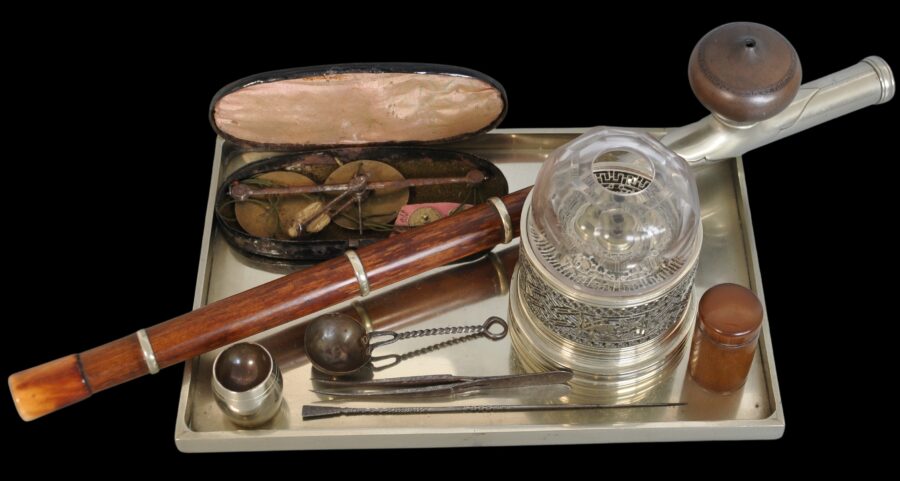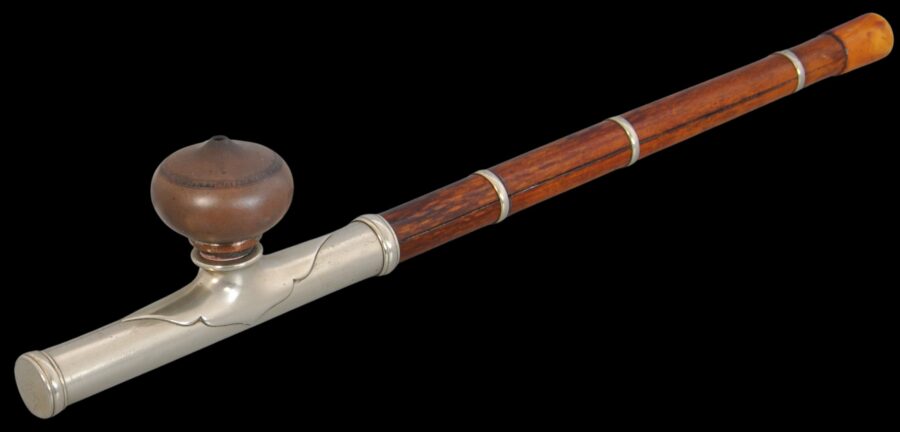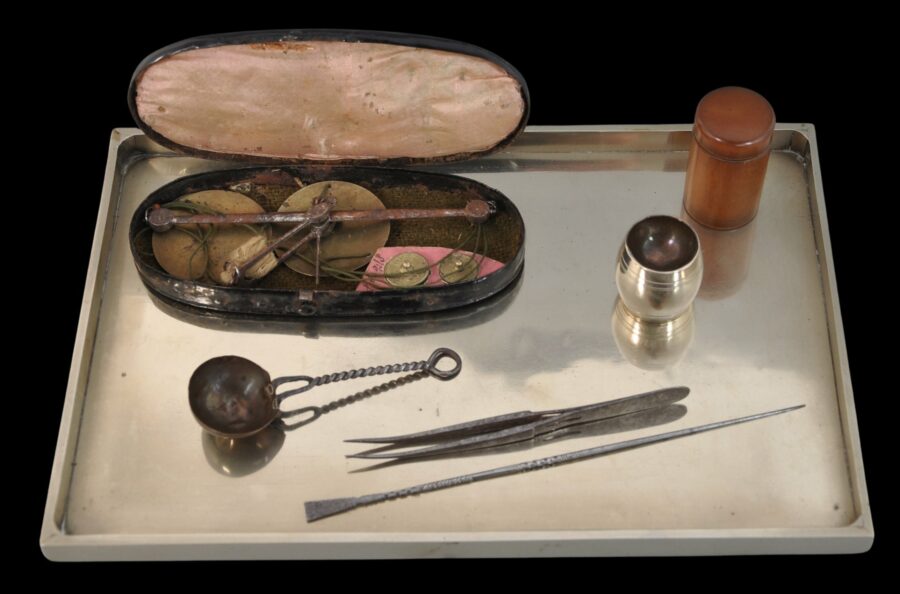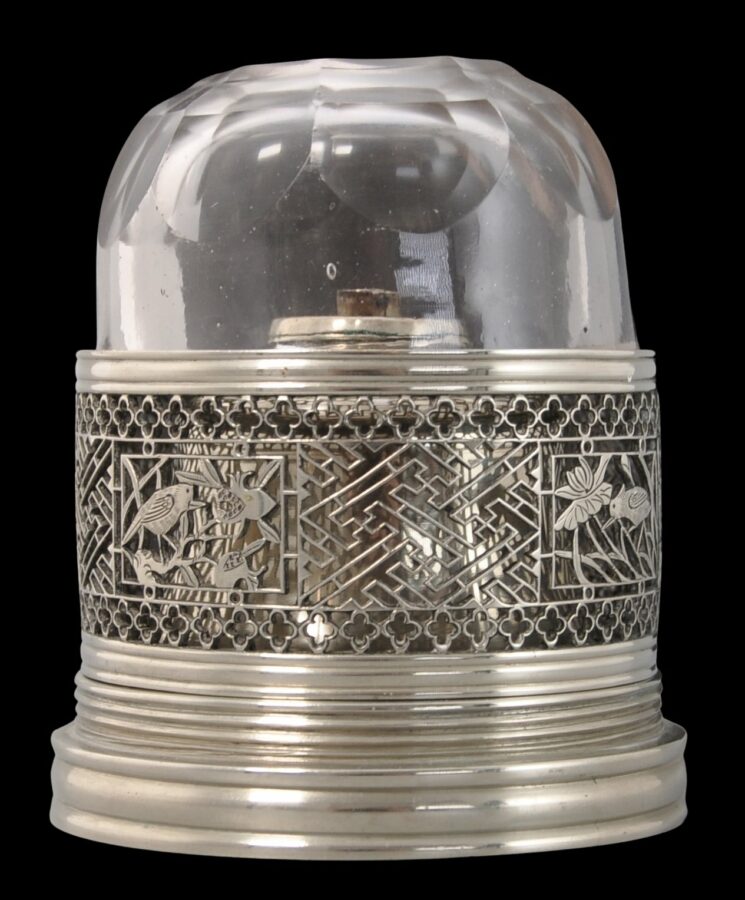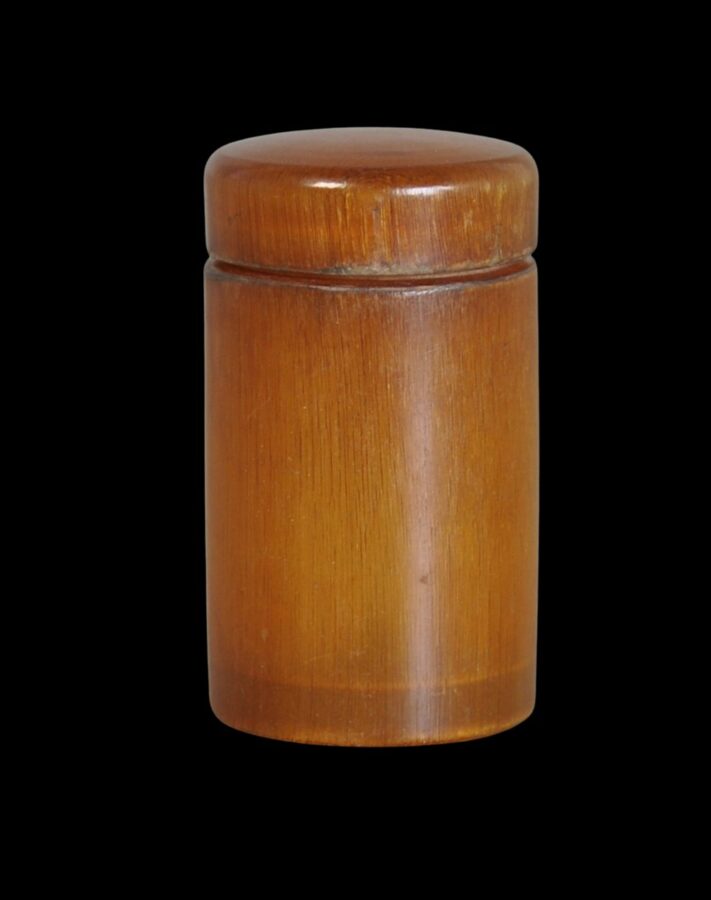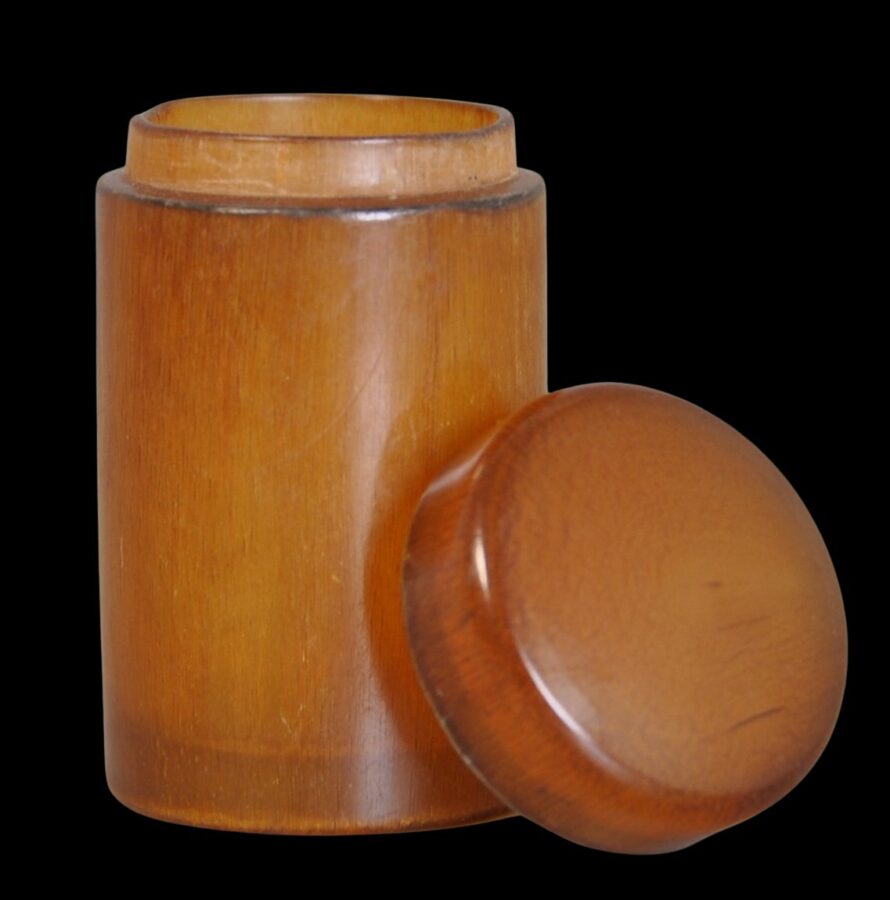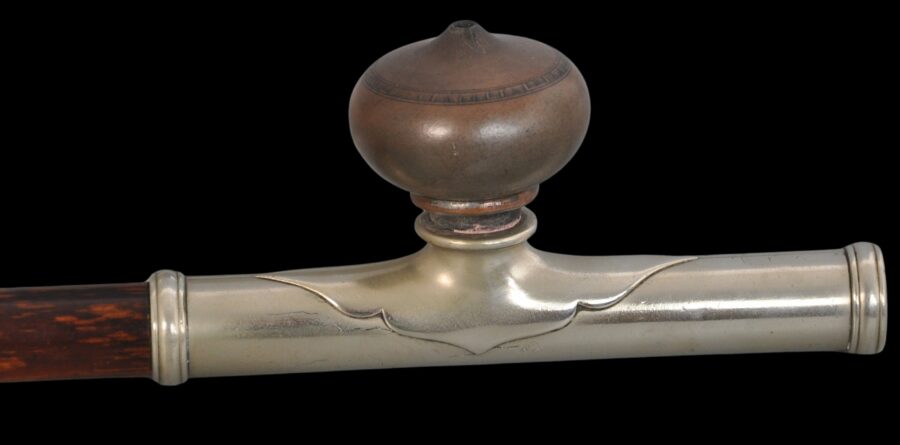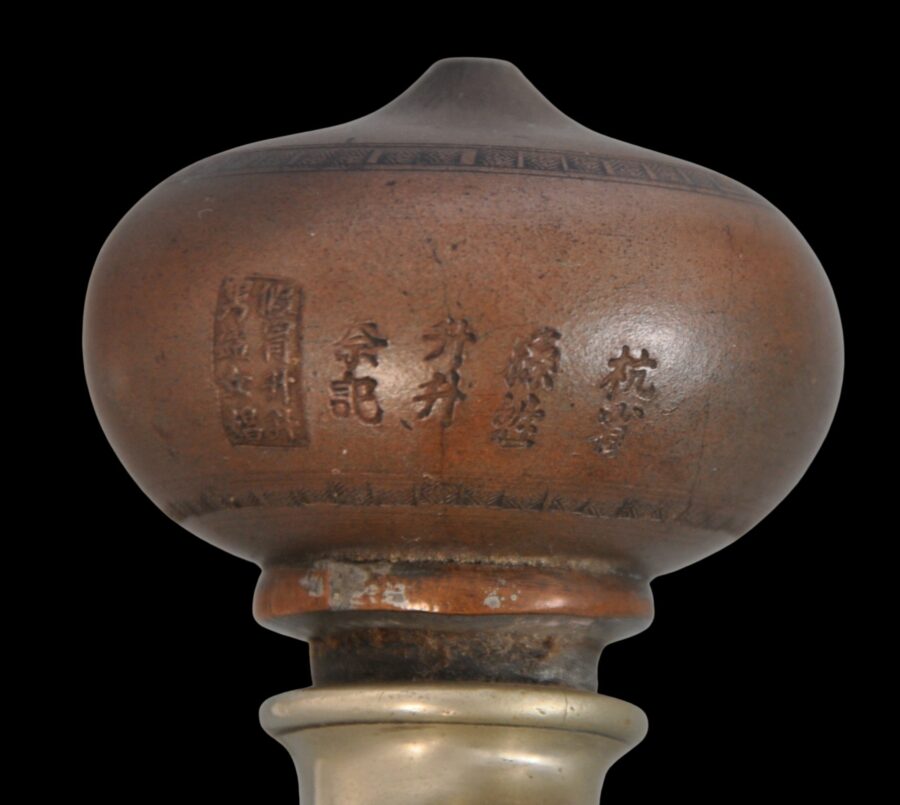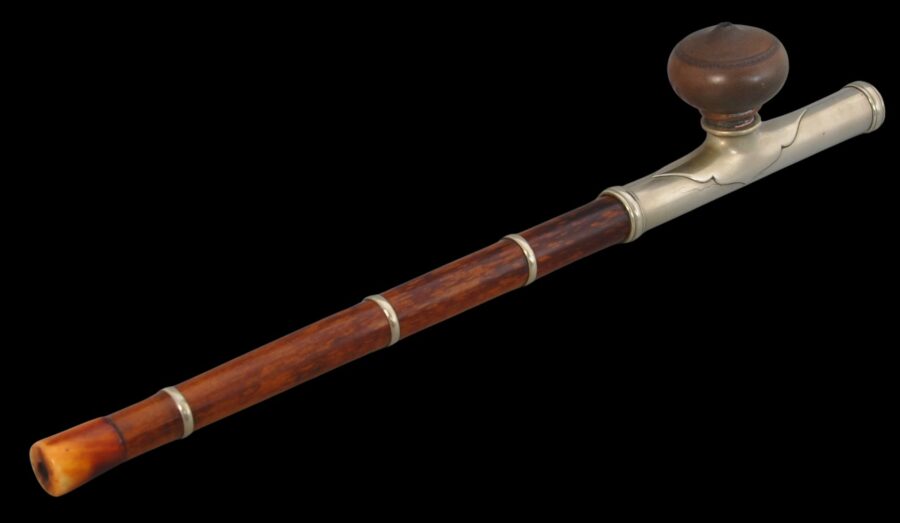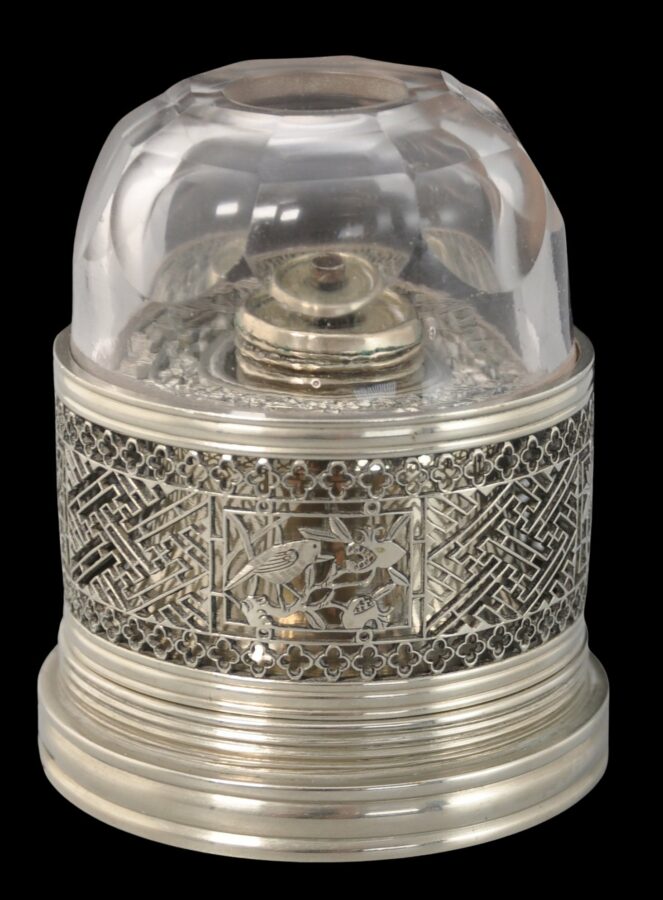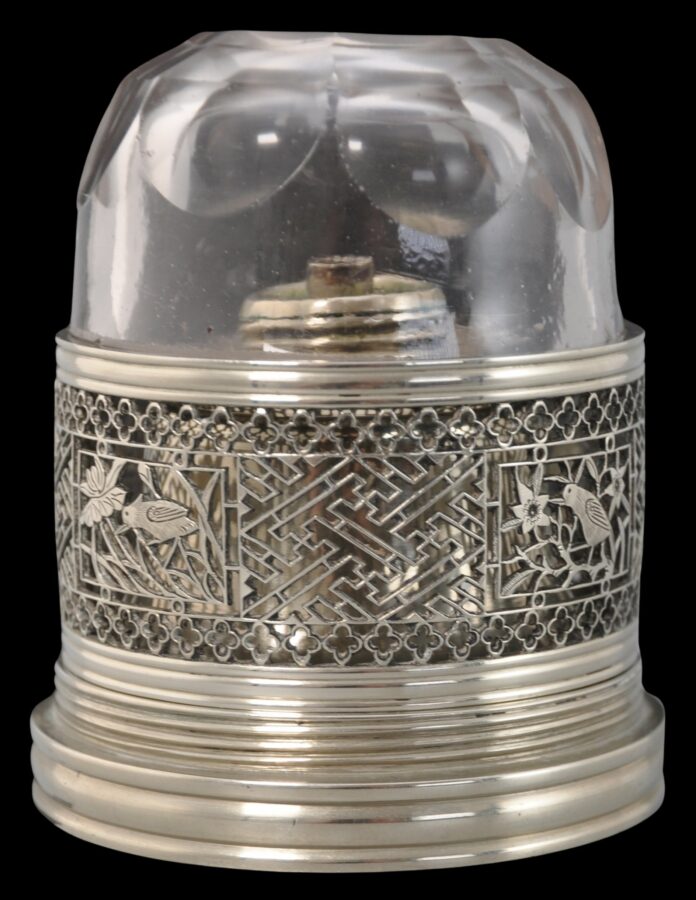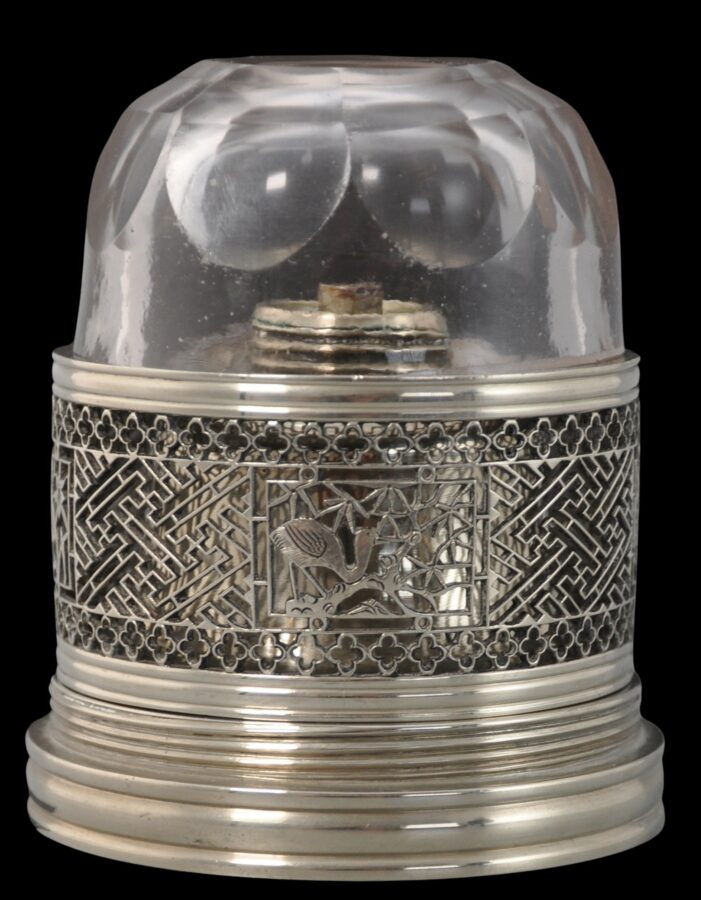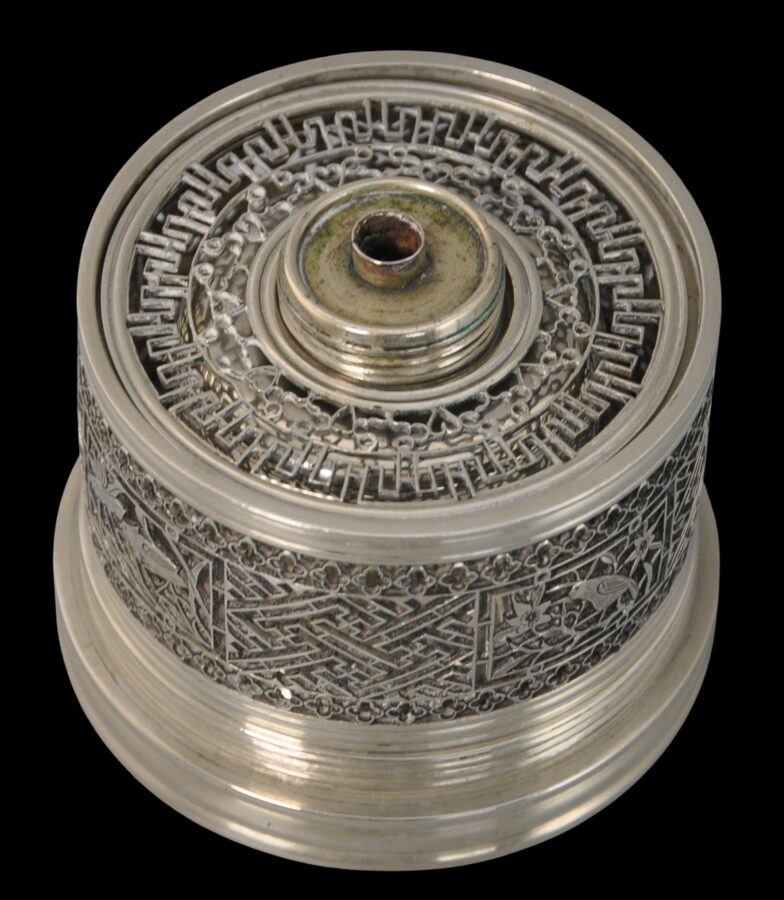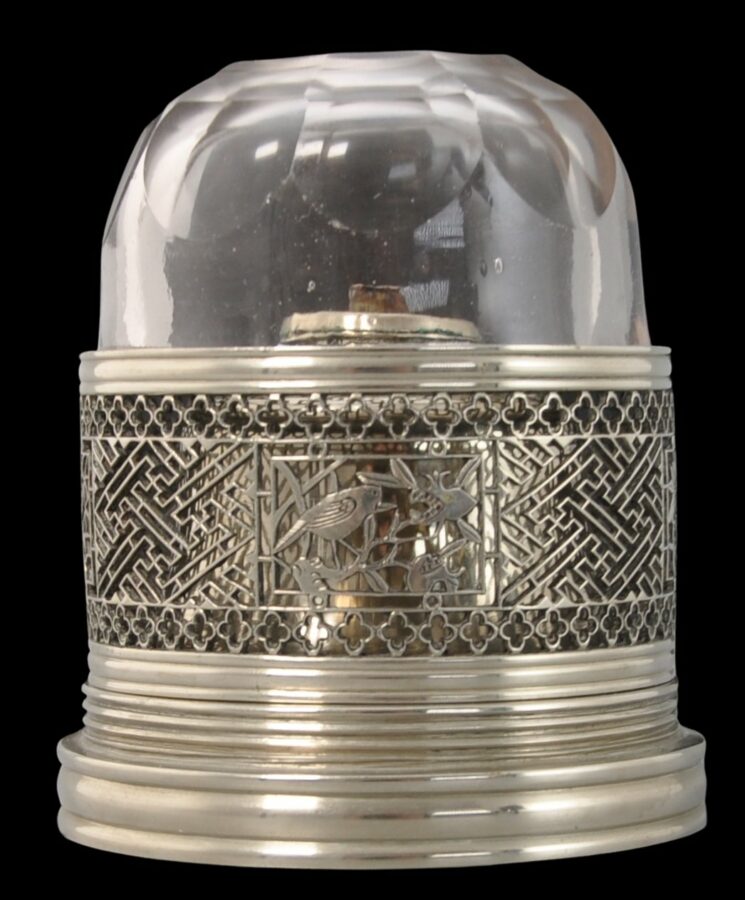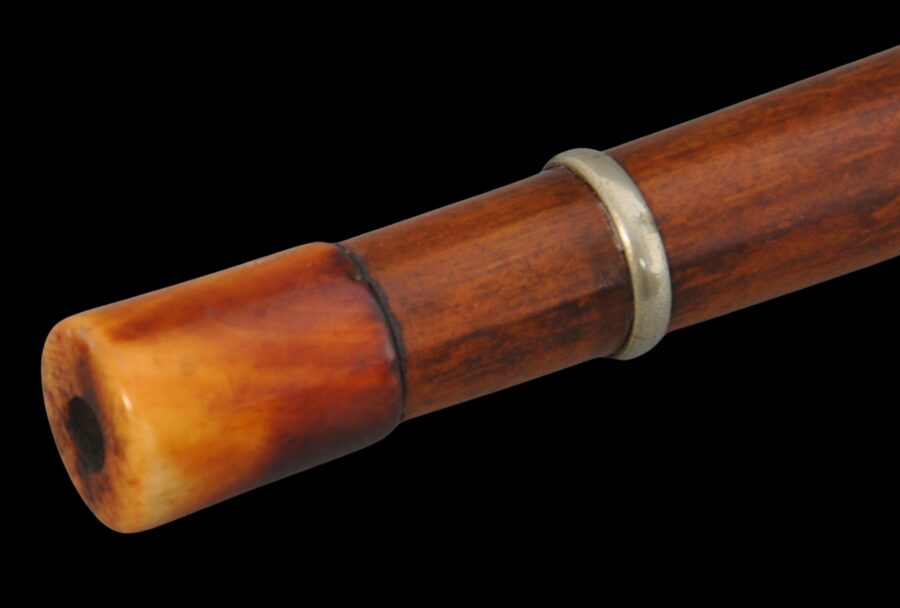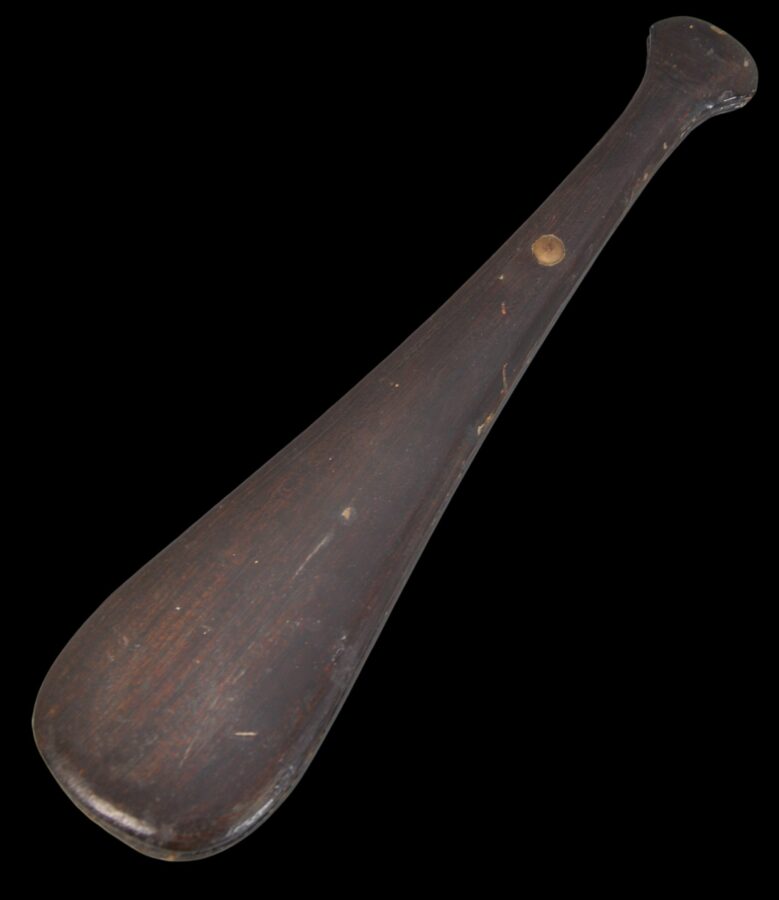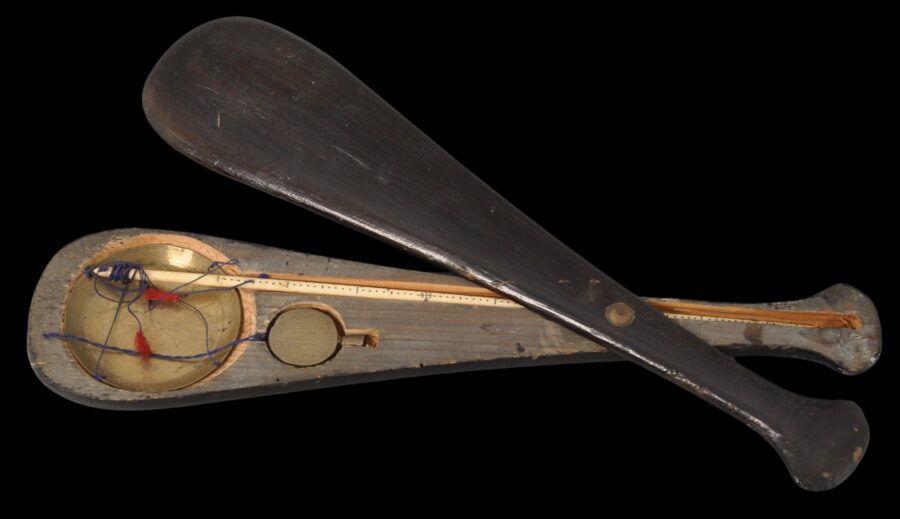This complete opium set comprises an opium pipe and bowl, two sets of scales with weights, a lamp, a spoon, a cleaning needle, a par of tweezers, a rhinoceros horn opium box, a small dross box, and a large, rectangular tray.
Each element is of particularly high quality, and so the set would have been intended for a wealthy smoker.
The pipe comprises a bamboo or wood stem with an ivory mouthpiece , silver mounts, and and a moulded terracotta opium bowl. The terracotta has been impressed with Chinese characters which read variously 杭省 Hang Province (Hang is actually a region of a province), 孫姓 Sun (surname or family name of the maker), 升升 Sheng Sheng (probably the brandname), 奈記 Nai Ji (probably the shop name), and 假冒升升 / 男盜女娼 which is an exhortation to fakers that if they fake Sheng Sheng, then a male is a thief, and a female is a prostitute!
Whilst opium pipes and bowls were made from a variety of materials, the mixture of materials used to make this set – bamboo, ivory, silver and terracotta – was considered the most ideal by opium users (Lee, 2006.) A well-seasoned bamboo pipe was felt to greatly enhance the flavour of the opium vapour and also its potency.
The lamp is particularly beautiful with a pierced base decorated with key-fret panels and four pierced panels that show birds amid either pomegranates, bamboo, lotus and plum blossoms. The cover is of heavy, moulded glass. The base of the lamp is marked with 順德 (Shun De), a city in Guangdong, China.
The set includes a small elegant cylindrical box with a tightly fitting domed cap, all made from rhinoceros horn. This was to keep the opium. The tightly fitting lid was necessary because in hot weather, opium can ooze and leak from its container.
There is also a silver spoon used to hold the opium block over the lamp flame, a small barrel-shaped vessel into which the opium dross could be tipped, a pair of silver tweezers used to handle the opium block, and a long and particularly pleasing silver needle that was used to clear the hole in the opium pipe’s bowl.
There are two sets of scales. One is in a black lacquered iron box and includes two weights and the other is in a wooden box and includes one weight.
Most opium pipes available today are reproduction pieces – it is rare now for genuine examples to appear on the market. The patina of the example here, the quality of the materials used in its manufacture, and its resinous interior attest to its age and past use. It is rarer still to have all the original components of a set, as used by a smoker.
Note: this item contains antique ivory but which amounts to less than 10% by volume. It therefore has, as is required by UK law, a non-transferable, UK Ivory Act 2018 exemption permit, submission reference number: KTAGL34G
References
Bertholet, F.M., Opium: Art et Histoire d’un Rituel Perdu, Fonds Mercator, 2007.
Lee, P., Opium Culture: The Art & Ritual of the Chinese Tradition, Park Street Press, 2006.
Martin, S., The Art of Opium Antiques, Silkworm Books, 2007.


